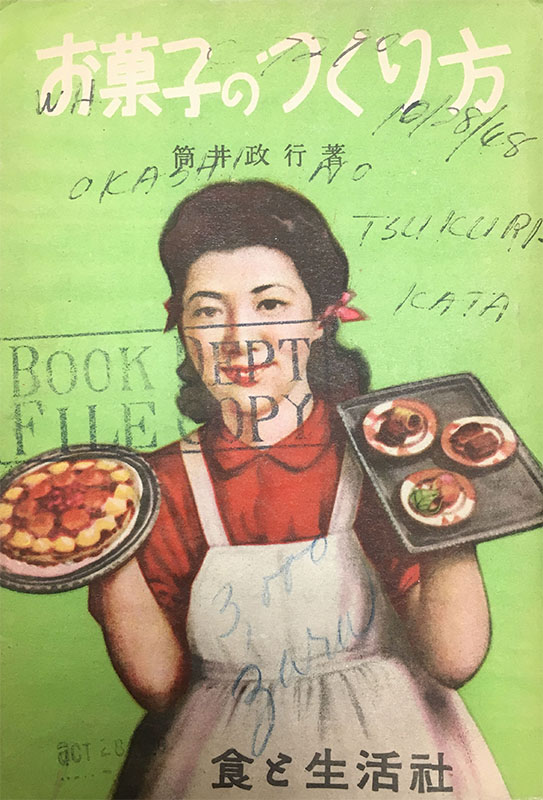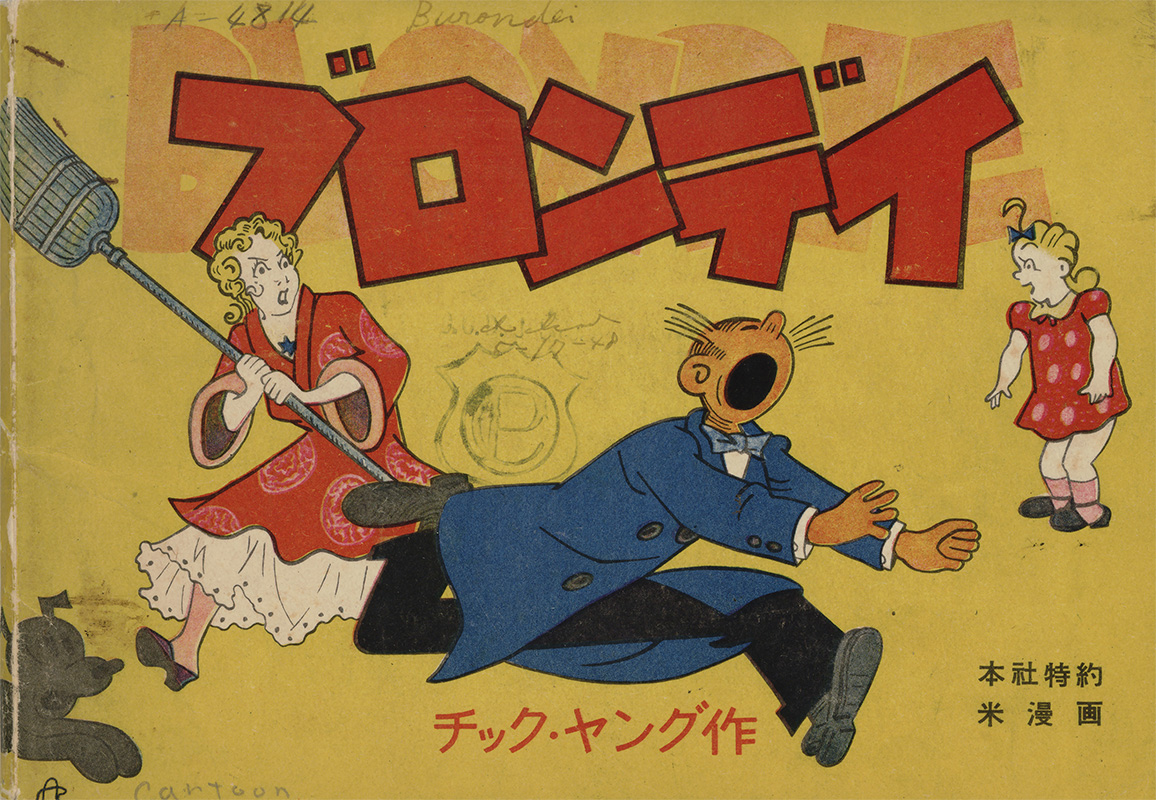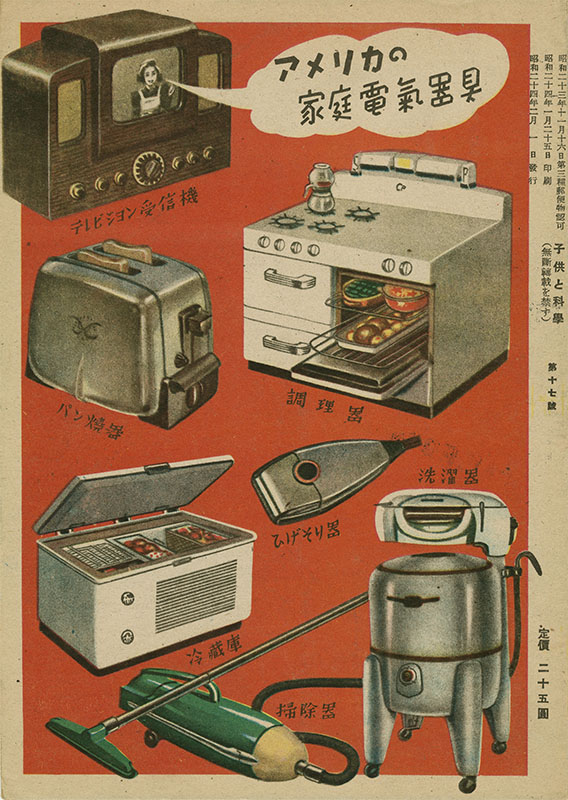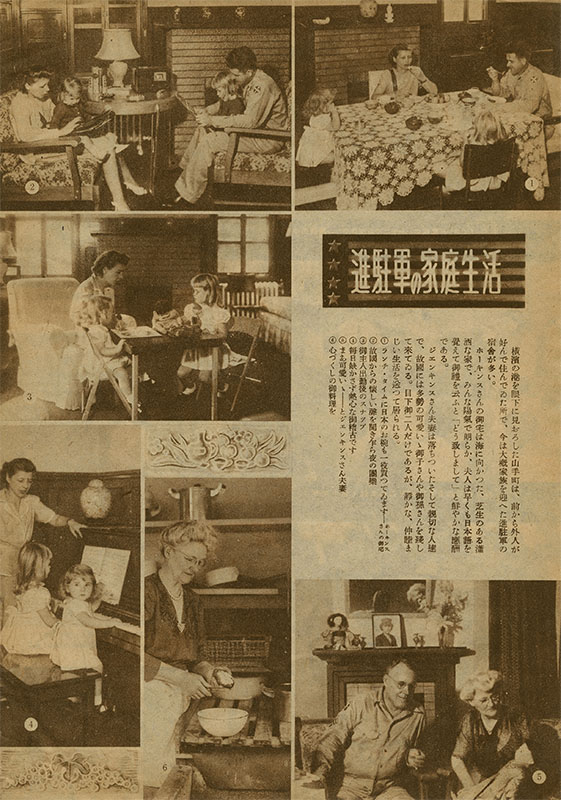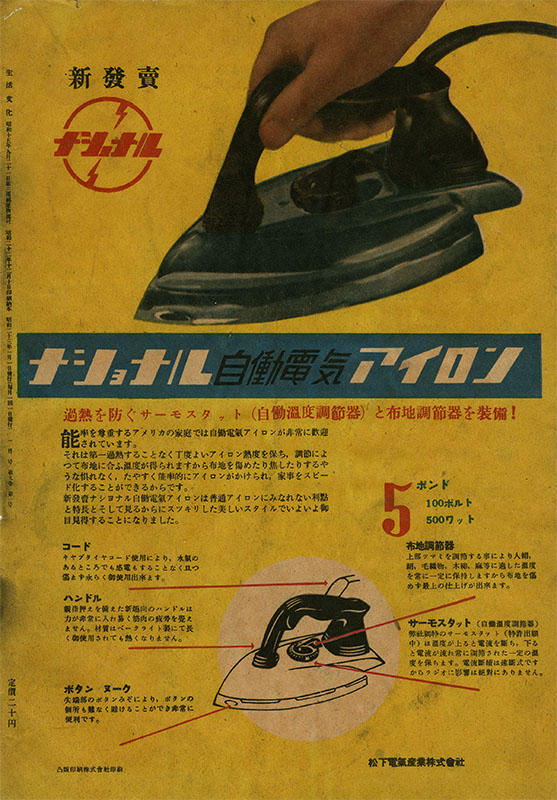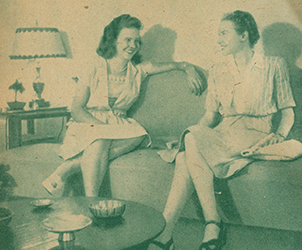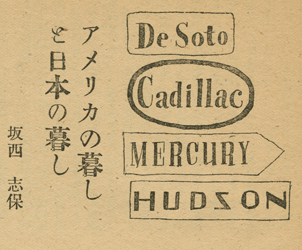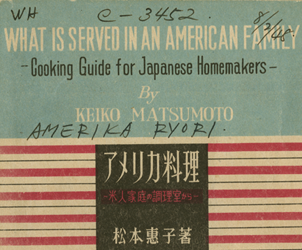Professionalizing Housework
American Home Life as a Model for New Japan
Applicants for meido positions had a variety of reasons for applying. Chief among them was the relatively high wages, together with the opportunity to develop English language skills and gain first-hand experience of American home life. These women were eager to learn new home management skills, from cooking and cleaning to childrearing and table manners. A majority of Japanese women were unfamiliar with emerging household technologies and Western household management, which seemed well structured and efficient in their eyes. It became a popular notion that it was American domestic science that afforded American housewives the time to go shopping and hold family parties so frequently. In fact, for many American housewives who relocated to Japan during the Occupation, the life they enjoyed there was more luxurious than they could have dreamed of at home.
“Domestic life in an American home is organized to give a maximum amount of leisure time to the homemaker. I shall be very happy if these hints on American domestic life help Japanese women in rebuilding their home life for a happier Japan.”
Keiko Matsumoto, the author of “What is served in an American Family-Cooking Guide for Japanese Homemakers,” April 1948
Burondī [Blondie], 1947
Blondie, an American comic strip created by the cartoonist Chic Young, was first published in September 1930 in the United States. It depicted the life of Blondie and Dagwood Bumstead and their American middle-class life in the suburbs of Joplin, Missouri. Shūkan Asahi, a popular Japanese weekly magazine, began serializing the strip in 1946. It was picked up by Asahi Shimbun, one of Japan’s major daily newspapers, in January 1949.
Kodomo to Kagaku [Children and Science], February 1949
The back cover of this children’s magazine entitled, “Children and Science,” featured a variety of American electronic appliances, such as a toaster and a vacuum cleaner, which were rare in Japanese households at the time.
Seikatsu Bunka [Life & Culture], November 1946
“The Family Life of U.S. Military Personnel” featured the daily life of two U.S military families, the Hawkins and the Jenkins. They were seen having lunch using Japanese bowls, relaxing at night listening to U.S. radio programs, spending time at home during the day, practicing piano, admiring a Japanese doll, and cooking homemade dishes.
Seikatsu Bunka [Life & Culture], December 1948
This is an advertisement for an electric iron, manufactured by one of Japan’s pioneering electronics companies, known today as the Panasonic Corporation. The electric iron was touted as a must-have item, since it was widely used in American homes, where efficiency was valued.

